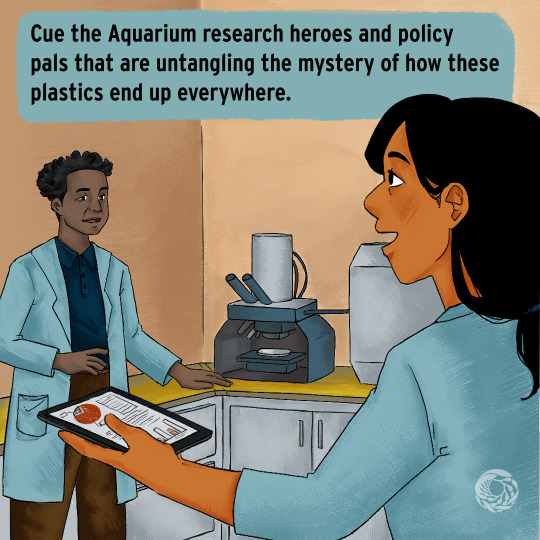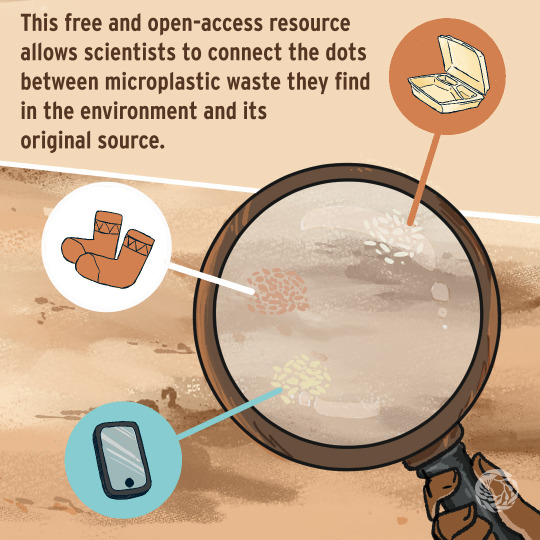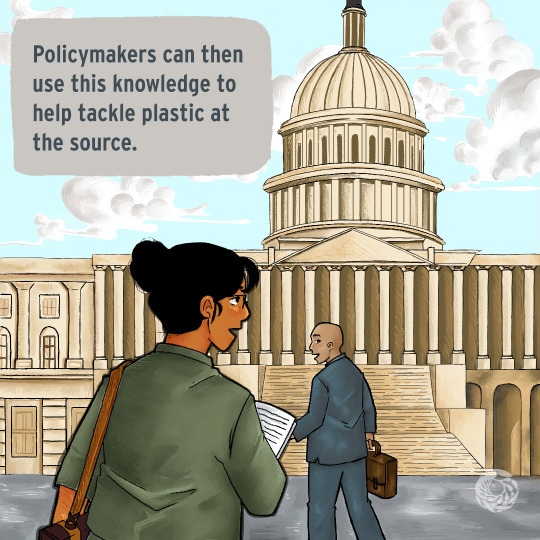#IT innovation
Explore tagged Tumblr posts
Text

@crevolab is a creative business solutions agency that blends innovation, technology, and strategy to boost productivity, enhance brand presence, and drive growth. We deliver customized solutions in web design, digital marketing, and business consulting to help businesses thrive in the digital world.
Let’s bring your vision to life! 🚀✨
Connect with Crevo Lab for innovative web design, digital marketing, and tailored business solutions. Your growth starts here. 💼
#creative solutions#IT innovation#tech meets creativity#where technology meets creativity#Creative solution#Business Innovation#Digital Transformation#strategic growth#Innovative Agency#Brand development#digital marketing#crevolab
0 notes
Text
Quantum Computing: A New Era of Unmatched Processing Power

Breakthroughs in the world of technology do not happen very often. But when they do, they alter everything’s shape. Quantum computing is just that revolution currently taking place. Quantum mechanics-the science concerned with the odd behaviors of particles at atomic and subatomic levels-has fascinated scientists for decades. Today, quantum principles are leaving the lab and entering the world of IT to promise a revolution in industrial problems that classical computers cannot even scratch. Welcome to the age of Quantum Progress.
What is Quantum Computing?
It’s helpful to know what makes quantum computing so revolutionary to understand why it’s so different from the classical variety. That is, in simple words, while traditional computers work on bits and every bit is either 0 or a 1, qubits in quantum computers can represent 0 and 1 at the same time through a property called superposition. These quantum computers can therefore perform many calculations at one time, theoretically solving problems that were unimaginable until now.
Quantum computers also employ entanglement-the rather other quantum phenomenon where qubits link up. An entangled qubit influences its partner instantly, regardless of the distance between the two. These properties make quantum computers more powerfully and efficiently in some complex calculations than even their best silicon-based competitors.
Why Quantum Progress Matters for IT
Quantum computing’s potential applications in IT are vast, and we’re only beginning to scratch the surface. Here’s how quantum progress could reshape key areas of the IT landscape:
1. Cybersecurity Revolution
A quantum computer is, therefore, a double-edged sword for security. It can crack existing cryptos by factorizing large numbers at lightning speed that would be impossible even for classical computers to do. Researchers are, therefore scrambling to come up with quantum-resistant encryption methods to bolster post-quantum digital security. On the other hand, quantum principles themselves can further security in quantum key distribution (QKD), which has allowed for virtually unhackable networks based on the properties of entangled particles.
2. Data Analysis and Big Data
Data is gold in the age of digits, and data analysis could, and arguably will be accelerated with quantum computing, which can swiftly process large-scale data sets into uncovering the patterns and insights in a pace faster than classical systems. Healthcare, finance, and climate research stand to benefit greatly, as predictive modeling and even data-driven decision-making is something that should be faster, clearer, and more accurate because of quantum technology.
3. Artificial Intelligence and Machine Learning
AI and machine learning devour processing power mainly in training very complex models. Quantum computing enables, by its nature, the simultaneous evaluation of many calculations and opens up new routes toward AI. Finally, it will be possible to break out of certain traps of machine learning using quantum algorithms and thus open up a new era of quantum-enhanced AI able to solve previously intractable problems.
4. Optimization in Business and Logistics
Many industries—ranging from logistics to finance—relate to optimization, solving for the best outcome in complex scenarios. Optimization problems thus fit particularly well to quantum computers since they can check many possibilities at once. Quantum techniques can optimize routes for delivery trucks, portfolio management, and energy distribution much better.
Recent Milestones in Quantum Computing
Breakthroughs from Google, IBM, and Microsoft have propelled quantum to the next level. Google just announced that its quantum processor, Sycamore, had achieved “quantum supremacy,” solving in 200 seconds a problem that would take a classical supercomputer more than 10,000 years to solve. IBM and Microsoft are bringing quantum within easy reach for businesses and researchers through cloud-based platforms such as IBM Quantum and Microsoft Azure Quantum, bringing quantum-as-a-service (QaaS) to the world.
Advances in hardware are also driving quantum progress. Companies are in a dead sprint to produce stable, high-qubit-count processors-things that will actually get a quantum computer to a useful advantage over classical computers-on real problems.
Challenges Along the Quantum Journey
While quantum computing holds immense promise, it’s still in the early stages, facing several key challenges:
Qubit Stability: Qubits are highly fragile and poorly maintain their quantum state for sufficient periods of time, so to speak, known as coherence. A slight change in temperature or minute noise can create computational errors.
Error Rates and Quantum Decoherence: Error correction will be required for practical quantum computation, but because qubits function, the problem to correct quantum errors is of very high complexity. Researchers are constantly developing solutions to improve the quantum systems’ precision or prolong their lifetime.
Cost and Access: Building and maintaining quantum hardware is expensive-it requires extremely low temperatures and special environments. Cloud computing brings a step toward democratization, but the benefit of mainstream affordability remains for the future.
Though these are barriers, quantum progress moves forward with some major investment from companies and governments in the research and development of all thing’s quantum.
The Future of Quantum in IT
As quantum technology continues to evolve, we can expect it to become an integral part of IT infrastructure:
1. Quantum-Enhanced AI and Analytics: Within the decade, quantum enhancement of AI will be capable of bringing significant breakthroughs in natural language processing, computer vision, and robotics because power is delivered to models enabling analysis at unprecedented speeds.
2. Hybrid Quantum-Classical Systems: Hybrid systems will be available before fully scalable quantum computers. Hybrid systems will enable companies to latch onto quantum advance in selected areas and solve tough problems more efficiently without having to go all in on quantum.
3. Reshaping IT Infrastructure: Very similar to how cloud computing revolutionized the rethink of the IT infrastructure, quantum will rewrite the rulebook as far as the approach to data storage and processing and security is concerned. Safe quantum key distribution and quantum-safe encryption would change the way we communicate with each other and the integrity with which one approaches the data.
4. Quantum Workforce Readiness: The arrival of quantum computers reflects the need for new skills in the IT world. Quantum algorithm developers, quantum engineers, and quantum researchers are emerging new roles; their training has been provided by universities as well as by online platforms.
Conclusion
Quantum progress goes well beyond being the fancy of science. Instead, it is more of a historical shift, promising to transform IT and many other industries. We are just at the start, but the speed of quantum computing holds within it a future where quantum technologies could become daily tools for cybersecurity, AI, big data, and much more.
For the present, IT professionals and aficionados can look forward to more hybrid systems and quantum-as-a-service options. And there will be continuous infusion of research and development work into making quantum computing more accessible and more practical. As quantum developments unfold, keeping abreast of this revolutionary technology will prove vital for those interested in IT futures.
0 notes
Text
How to Identify IT Innovation Opportunities?
Introduction IT innovation opportunities have become the talk of the town. Understanding the dynamics of such opportunities can prosper a company ahead of its competition. Here’s an insightful guide that throws light on this process, from identification through to implementation. So, let us all get started! But first let us understand what IT Innovation Opportunities are. What are IT…
0 notes
Text
Smart Sigzen move: IT Infrastructure Management Made Understandable
In the fast-paced world of technology, a robust IT infrastructure is the backbone of any successful business. IT Infrastructure Management plays a pivotal role in ensuring the seamless functioning of an organization’s digital ecosystem. From servers and networks to security and databases, managing these components efficiently is essential for sustained productivity and growth. Services of Sigzen…

View On WordPress
#IT Infrastructure Management#IT Innovation#IT Insights#IT Professionals#IT Solutions#IT Tutorial#Smart Technology
0 notes
Text
ABACUSYNTH by ELIAS JARZOMBEK [2022]
Abacusynth is a synthesizer inspired by an abacus, the ancient counting tool used all around the world. Just like an abacus is used to learn the fundamentals of math, the Abacusynth can be used to explore the building blocks of audio synthesis.
#elias jarzombek#abacusynth#technology#instruments#synthesizer#innovation#abacus#contemporary art#music#video#u
11K notes
·
View notes
Text




distinguished innovators competition
#jayvik#jayce arcane#viktor arcane#jayce x viktor#jayce talis#arcane#distinguished innovators competition#my take on what happened lol#both are a nervous wreck but they have different ways of showing it
2K notes
·
View notes
Photo




Art by Syd Mead. If I understand the source correctly, this one’s called "Innovations," and is a surrealist city aerial view done for U.S. Steel in 1968.
4K notes
·
View notes
Text
In this article, we will go through some advantages and Disadvantages of Metaverse in IT industry.
0 notes
Text

Endangered Species Highlight: The Water Cone Wizard
(inspired by this post)
#wizard#digital art#This is a bit more of 'my take on the concept' than fan art of the OG post but here me out...Tiny Water Cone Wizards.#They are similar to a hermit crab and have to swap out hats as they grow larger.#They are a eusocial species with a queen who both delivers more cones and also gives birth to more wizards.#So remember! Next time you see a tower of water cones; Do not disturb them! That is a nest and she is trying to nurse her young!#Thank you again to stackedbirds for sending me incredible wizard posts.#While their discarded hats may seem like a good one-time-use recepticle for water - please recycle them!#Wizard Juveniles rely on the discarded cones as part of their development!#The office wizard ecosystem is a very delicate balance and we are losing so many species each year to invasive innovations.#(Thank you again to Stackedbirds for fueling my love for wizardposts!)
796 notes
·
View notes
Text
How lock-in hurts design

Berliners: Otherland has added a second date (Jan 28) for my book-talk after the first one sold out - book now!

If you've ever read about design, you've probably encountered the idea of "paving the desire path." A "desire path" is an erosion path created by people departing from the official walkway and taking their own route. The story goes that smart campus planners don't fight the desire paths laid down by students; they pave them, formalizing the route that their constituents have voted for with their feet.
Desire paths aren't always great (Wikipedia notes that "desire paths sometimes cut through sensitive habitats and exclusion zones, threatening wildlife and park security"), but in the context of design, a desire path is a way that users communicate with designers, creating a feedback loop between those two groups. The designers make a product, the users use it in ways that surprise the designer, and the designer integrates all that into a new revision of the product.
This method is widely heralded as a means of "co-innovating" between users and companies. Designers who practice the method are lauded for their humility, their willingness to learn from their users. Tech history is strewn with examples of successful paved desire-paths.
Take John Deere. While today the company is notorious for its war on its customers (via its opposition to right to repair), Deere was once a leader in co-innovation, dispatching roving field engineers to visit farms and learn how farmers had modified their tractors. The best of these modifications would then be worked into the next round of tractor designs, in a virtuous cycle:
https://securityledger.com/2019/03/opinion-my-grandfathers-john-deere-would-support-our-right-to-repair/
But this pattern is even more pronounced in the digital world, because it's much easier to update a digital service than it is to update all the tractors in the field, especially if that service is cloud-based, meaning you can modify the back-end everyone is instantly updated. The most celebrated example of this co-creation is Twitter, whose users created a host of its core features.
Retweets, for example, were a user creation. Users who saw something they liked on the service would type "RT" and paste the text and the link into a new tweet composition window. Same for quote-tweets: users copied the URL for a tweet and pasted it in below their own commentary. Twitter designers observed this user innovation and formalized it, turning it into part of Twitter's core feature-set.
Companies are obsessed with discovering digital desire paths. They pay fortunes for analytics software to produce maps of how their users interact with their services, run focus groups, even embed sneaky screen-recording software into their web-pages:
https://www.wired.com/story/the-dark-side-of-replay-sessions-that-record-your-every-move-online/
This relentless surveillance of users is pursued in the name of making things better for them: let us spy on you and we'll figure out where your pain-points and friction are coming from, and remove those. We all win!
But this impulse is a world apart from the humility and respect implied by co-innovation. The constant, nonconsensual observation of users has more to do with controlling users than learning from them.
That is, after all, the ethos of modern technology: the more control a company can exert over its users ,the more value it can transfer from those users to its shareholders. That's the key to enshittification, the ubiquitous platform decay that has degraded virtually all the technology we use, making it worse every day:
https://pluralistic.net/2023/02/19/twiddler/
When you are seeking to control users, the desire paths they create are all too frequently a means to wrestling control back from you. Take advertising: every time a service makes its ads more obnoxious and invasive, it creates an incentive for its users to search for "how do I install an ad-blocker":
https://www.eff.org/deeplinks/2019/07/adblocking-how-about-nah
More than half of all web-users have installed ad-blockers. It's the largest consumer boycott in human history:
https://doc.searls.com/2023/11/11/how-is-the-worlds-biggest-boycott-doing/
But zero app users have installed ad-blockers, because reverse-engineering an app requires that you bypass its encryption, triggering liability under Section 1201 of the Digital Millennium Copyright Act. This law provides for a $500,000 fine and a 5-year prison sentence for "circumvention" of access controls:
https://pluralistic.net/2024/01/12/youre-holding-it-wrong/#if-dishwashers-were-iphones
Beyond that, modifying an app creates liability under copyright, trademark, patent, trade secrets, noncompete, nondisclosure and so on. It's what Jay Freeman calls "felony contempt of business model":
https://locusmag.com/2020/09/cory-doctorow-ip/
This is why services are so horny to drive you to install their app rather using their websites: they are trying to get you to do something that, given your druthers, you would prefer not to do. They want to force you to exit through the gift shop, you want to carve a desire path straight to the parking lot. Apps let them mobilize the law to literally criminalize those desire paths.
An app is just a web-page wrapped in enough IP to make it a felony to block ads in it (or do anything else that wrestles value back from a company). Apps are web-pages where everything not forbidden is mandatory.
Seen in this light, an app is a way to wage war on desire paths, to abandon the cooperative model for co-innovation in favor of the adversarial model of user control and extraction.
Corporate apologists like to claim that the proliferation of apps proves that users like them. Neoliberal economists love the idea that business as usual represents a "revealed preference." This is an intellectually unserious tautology: "you do this, so you must like it":
https://boingboing.net/2024/01/22/hp-ceo-says-customers-are-a-bad-investment-unless-they-can-be-made-to-buy-companys-drm-ink-cartridges.html
Calling an action where no alternatives are permissible a "preference" or a "choice" is a cheap trick – especially when considered against the "preferences" that reveal themselves when a real choice is possible. Take commercial surveillance: when Apple gave Ios users a choice about being spied on – a one-click opt of of app-based surveillance – 96% of users choice no spying:
https://arstechnica.com/gadgets/2021/05/96-of-us-users-opt-out-of-app-tracking-in-ios-14-5-analytics-find/
But then Apple started spying on those very same users that had opted out of spying by Facebook and other Apple competitors:
https://pluralistic.net/2022/11/14/luxury-surveillance/#liar-liar
Neoclassical economists aren't just obsessed with revealed preferences – they also love to bandy about the idea of "moral hazard": economic arrangements that tempt people to be dishonest. This is typically applied to the public ("consumers" in the contemptuous parlance of econospeak). But apps are pure moral hazard – for corporations. The ability to prohibit desire paths – and literally imprison rivals who help your users thwart those prohibitions – is too tempting for companies to resist.
The fact that the majority of web users block ads reveals a strong preference for not being spied on ("users just want relevant ads" is such an obvious lie that doesn't merit any serious discussion):
https://www.iccl.ie/news/82-of-the-irish-public-wants-big-techs-toxic-algorithms-switched-off/
Giant companies attained their scale by learning from their users, not by thwarting them. The person using technology always knows something about what they need to do and how they want to do it that the designers can never anticipate. This is especially true of people who are unlike those designers – people who live on the other side of the world, or the other side of the economic divide, or whose bodies don't work the way that the designers' bodies do:
https://pluralistic.net/2022/10/20/benevolent-dictators/#felony-contempt-of-business-model
Apps – and other technologies that are locked down so their users can be locked in – are the height of technological arrogance. They embody a belief that users are to be told, not heard. If a user wants to do something that the designer didn't anticipate, that's the user's fault:
https://www.wired.com/2010/06/iphone-4-holding-it-wrong/
Corporate enthusiasm for prohibiting you from reconfiguring the tools you use to suit your needs is a declaration of the end of history. "Sure," John Deere execs say, "we once learned from farmers by observing how they modified their tractors. But today's farmers are so much stupider and we are so much smarter that we have nothing to learn from them anymore."
Spying on your users to control them is a poor substitute asking your users their permission to learn from them. Without technological self-determination, preferences can't be revealed. Without the right to seize the means of computation, the desire paths never emerge, leaving designers in the dark about what users really want.
Our policymakers swear loyalty to "innovation" but when corporations ask for the right to decide who can innovate and how, they fall all over themselves to create laws that let companies punish users for the crime of contempt of business-model.

I'm Kickstarting the audiobook for The Bezzle, the sequel to Red Team Blues, narrated by @wilwheaton! You can pre-order the audiobook and ebook, DRM free, as well as the hardcover, signed or unsigned. There's also bundles with Red Team Blues in ebook, audio or paperback.

If you'd like an essay-formatted version of this post to read or share, here's a link to it on pluralistic.net, my surveillance-free, ad-free, tracker-free blog:
https://pluralistic.net/2024/01/24/everything-not-mandatory/#is-prohibited

Image: Belem (modified) https://commons.wikimedia.org/wiki/File:Desire_path_%2819811581366%29.jpg
CC BY 2.0 https://creativecommons.org/licenses/by/2.0/deed.en
#pluralistic#desire paths#design#drm#everything not mandatory is prohibited#apps#ip#innovation#user innovation#technological self-determination#john deere#twitter#felony contempt of business model
3K notes
·
View notes
Text

@crevolab , our mission is to empower clients with affordable, custom web design and marketing solutions, helping them maximize their online potential and drive business growth.
✨️ Let's grow together! 🚀✨️
#crevolab#digital excellence#it innovation#tech meets creativity#digital empowerment#affordable design#effective marketing#custom solutions#custom solution#client success#innovativedesign#Marketing excellence#designforall#empowerthroughdesign#Tailored Marketing
0 notes
Text
Socks, food, and the ocean—they all have one thing in common: microplastics.
To tackle the microplastic pollution problem, researchers and policy experts from the Aquarium and @mbari-blog created an open-source library dedicated to helping researchers trace these tiny culprits back to their source. Check out the webcomic below to learn more!









You can read more about the library on our website. Together we can take down plastic pollution! 💙🌍
#monterey bay aquarium#open source innovation sensation#journey to the solution to plastic pollution
4K notes
·
View notes
Text
Silly little collab for a crossover AU between my Don't Worry About It AU and @gensational's Corruption of the Innovator AU that we've been playing around with in discord. Made the animatic as a warm up and some friends voiced it. Based on a bit from Brooklyn 99. Yi Voiced by @arcanilumia Eigong Voiced by @possessable
#nine sols#nine sols au#九日#mak's art#fan art#9s dwbi au#yinnovator au#corruption of the innovator au#yi#eigong#animatic#realizing the public has no context for this but f it we ball#yi and eigong are alive and they both hate themselves and are always apologizing thats the bit#dont worry about the innovator au#9s dwbti au#going stupid crazy in the nine sols themed barbie dream house
719 notes
·
View notes
Text
if you could pick the met gala theme what would you choose??
#i heard a rumor a while back that a theme would be athletic fasion innovation and i LOVED that idea#also a theme of textile printing#like. dif types of printing techniques/patterns/customs....#printing has been around for over 2k years there is SO MUCH.#anyways rb this i want to see what other ppl want#oh also maybe smth abt silhouette???
14K notes
·
View notes
Text


Marcille Donato ; Delicious in Dungeon ☆ Apex Innovation
#marcille donato#dunmeshi marcille#dungeon meshi marcille#dungeon meshi#dungeon meshi figure#dunmeshi#dunmeshi figure#delicious in dungeon#dungeon food#apex innovation#anime#anime figure#figure#figure collecting#anime figurine#figurine#anime collecting#scale figure#myfigurecollection#manga
616 notes
·
View notes